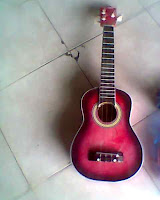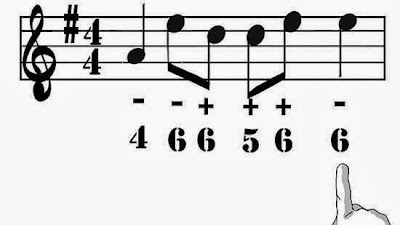Piano Lesson Two : The Scale of C Major
Before Piano Lesson One. Now Piano Lesson Two : The Scale of C Major.
Greetings again, one and all.
This is Lesson Two, on The Scale of C Major. This follows on logically from the previous lesson, where we learned about the notes C,D, and E, and playing the Octave.
There are many different scales: you will learn the major scales and the minor scales in time. But for now, The Scale of C Major is the first important scale to learn: It is the easiest scale to remember, as it contains only white notes.
So – we have learnt where C,D, and E lie. Well – guess what? You have already learned the first three notes of the Scale of C. The scale of C begins with those same three notes – C,D, and E.
The diagragm below shows you what the Scale of C looks like when it is written on the stave. This first example is written in the Treble Clef, or ‘G’ Clef, which is the clef most used for the right hand. It is called the ‘G’ Clef, because that elaborate swirly circle, which we call the ‘Clef’ begins on the 2nd line up, and that line denotes ‘G’.
But don’t worry about learning all these details at once. You pick these things up as you go along: once you understand how the system works, then learning the terms becomes a whole lot easier.
For now, just look at the visuals: On the diagram here, you can see that at the beginning of the scale, the notes are moving upward. This is because the scale is ascending to begin with. Then, you will notice that after the scale reaches the highest point, which is anOctave higher than the beginning C, the scale turns around to descend back down the scale, until it reaches the original tonic note of the scale which we began on.
Well, if you go to your piano or your keyboard, then you will see that these notes are also moving upward as you play them. Starting from Middle C, moving up towards the right,you get a higher pitch with each ascending note that you play.
We play a total of eight notes ascending in the scale of C Major, before we descendback down the scale again. We will start on Middle C and play all the white notes above middle C, until we reach the C which is an octave above. So – The Scale of C Major, written on the Treble Clef:
Now let’s have a look to see what the Scale of C looks like in the left hand. Here, it is written on the Bass Clef, or ‘F’ Clef. The ‘F’ Clef has its name, because this swirly embellishment, the ‘Clef’, has its beginnings on the 2nd line from the top, which denotes ‘F’. You can see that the notes move upwards, from space to line, from line to space, every time producing a higher note as the scale ascends.
Enough about that for the moment – let’s look at how the Scale of C Major is written for the left hand, on the Bass Clef, or ‘F’ Clef.
Now – To Play the Scale of C Major in the Right Hand:
We call going UP the scale, from middle C up to the top C, ascending the scale. We call the movement down from that higher C to the lower middle C, which I will run describe for you in a moment, descending the scale.
Place your right hand on your keyboard or piano. Put your thumb over middle C, in preparation to play the scale. Put your 2nd finger over the D note, and your third finger over E.
Play these notes now, evenly, one after the other, slowly, C…D…E… Now, put your right hand thumb neatly under the third finger, which is playing E. Slide that thumb onto the next white note beside the E your 3rd finger is on. Now, position your hand so that all the fingers are neatly placed over all the remaining white notes. These notes are the rest of the white notes which comprise the scale of C. Play the rest of the scale with the fingers which lie comfortably over the remaining notes of the C scale – F, G, A, B, C.
Your little finger will be at the top of the sequence now, on that C. To descend, simply play the 4th finger on the B, the third finger on the A, 2nd on the G, thumb (1) on the F.
Now – when you have run out of fingers, and you are left with your thumb on the F note, just reverse that procedure which we used to smoothly ride, when we ascended the scale, from the F to the G, where we put the thumb underneath. This time, because we are descending the scale, we put the 3rd finger over the top of the thumb, so that the 3rd finger neatly falls on the E, leaving the 2nd to play the D, and the thumb to play the Middle C note.
This hand movement is the exact opposite of the arrangement we used to ascend. To descend, we simply slide the third finger over the top of the thumb, instead of the thumb sliding underneath which we did in ascending the scale.
‘Voila’ – you have played the scale of C major, with the correct fingering. This is the beginning stage of learning a good piano technique. The fingering must be learned, just as I have explained above. Learning correct fingering is imperative if you want to play well.
We use this fingering in the right hand so that the notes can all be played evenly, and without any wierd arm or hand movements which would interfere with the smooth execution of your playing.
How To Play the Scale Of C Major with the Left Hand
Now – Are you ready to learn the left hand fingering? Do not be daunted. It is quite a logical procedure, really. We are just going to reverse the sequence which you used for the right hand…..
Eazy peazy. Just put your left hand little finger on the C below Middle C. Now – evenly play the notes ascending – C, D, E, F, G….
So – you have run out of fingers now that you have arrived at G in the left hand? Your thumb should be on that G. Now, put your 3rd finger OVER the thumb. Play the A with your third finger, as it stretches over the G note. Now, your 2nd finger will fall naturally onto the B, and your thumb will be left to play the Middle C.
Hooray – the ascending form of the scale of C Major has been played with the left hand. Now, descend evenly, using the exact same fingering to come down the scale. When you arrive at the third finger on A, slide the thumb neatly underneath, so that the thumb can play the G note evenly, without any hesitation. Continue to play the rest of the notes with the hand falling naturally over the rest of the notes – G, F, E, D, and back to C.
When the hand is placed over the five notes, with one finger allotted to each key, this is called the Five Finger Position.
Learn to play the Scale of C using separate hands. Play each note evenly. Try to get an even touch, so that no note is played louder than the next.
Homework: After you have practiced your scale of C Major with separate hands, and you have learned to play it smoothly, you could put the two hands together. Keep putting the effort into sitting at the keyboard and doing your practice. Do at least half an hour a day, every day, and you will see results.
This entry was posted in Learning to Read Music, Piano Lessons for Beginners, Piano Scales and tagged ascending the scale, bass clef, F clef, five finger position, G clef, learning to read music, piano scales, piano technique, scale of C major, the octave, treble clef. Bookmark the permalink.










